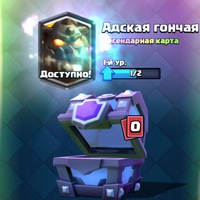
Чому губки не відносяться до справжніх багатоклітинних тварин?
 0
0
 0
0
Ответы на вопрос
 Внимание! Ответы на вопросы дают живые люди. Они могут содержать ошибочную информацию, заблуждения, а также ответы могут быть сгенерированы нейросетями. Будьте внимательны. Если вы уверены, что ответ неверный, нажмите кнопку "Пожаловаться" под ответом.
Внимание! Ответы на вопросы дают живые люди. Они могут содержать ошибочную информацию, заблуждения, а также ответы могут быть сгенерированы нейросетями. Будьте внимательны. Если вы уверены, что ответ неверный, нажмите кнопку "Пожаловаться" под ответом.

Ответ:
Справжніх багатоклітинних протиставлять первинним багатоклітинним, до яких зараховують типи губок та пластинчастих. Відрізняються наявністю м'язових та нервових клітин, а також спеціалізованими міжклітинними контактами. На сьогодні багато авторів відкидають виділення обох підцарств.
Объяснение:
Справжніх багатоклітинних протиставлять первинним багатоклітинним, до яких зараховують типи губок та пластинчастих. Відрізняються наявністю м'язових та нервових клітин, а також спеціалізованими міжклітинними контактами. На сьогодні багато авторів відкидають виділення обох підцарств.
 0
0
 0
0

Why are sponges not considered true multicellular animals?
Sponges, also known as poriferans, are unique organisms that belong to the phylum Porifera. While they are multicellular, they are not considered true multicellular animals. This is because sponges lack certain characteristics that are typically associated with true multicellularity.
Sponges lack specialized tissues and organs. Unlike most multicellular animals, sponges do not have distinct tissues or organs that perform specific functions. Instead, their bodies are made up of loosely organized cells that are capable of performing a variety of functions. These cells can change their roles and migrate within the sponge's body, allowing for flexibility in response to environmental conditions.
Sponges have a simple body structure. Sponges have a relatively simple body structure compared to other multicellular animals. They are composed of a few different types of cells, including choanocytes, which are responsible for creating water currents and capturing food particles, and amoebocytes, which are involved in digestion, reproduction, and other functions. These cells are embedded in a gelatinous matrix called the mesohyl.
Sponges lack true symmetry. Most multicellular animals exhibit some form of symmetry, such as bilateral symmetry or radial symmetry. However, sponges lack true symmetry and can have irregular shapes. This is another characteristic that sets them apart from true multicellular animals.
Sponges have a unique feeding mechanism. Sponges are filter feeders, meaning they obtain nutrients by filtering small particles from the water. They accomplish this through the coordinated movement of their choanocytes, which create water currents that bring in food particles. This feeding mechanism is different from the digestive systems found in true multicellular animals.
In summary, while sponges are multicellular, they lack specialized tissues and organs, have a simple body structure, lack true symmetry, and have a unique feeding mechanism. These characteristics distinguish them from true multicellular animals.
 0
0
 0
0
Похожие вопросы
Топ вопросов за вчера в категории Биология
Последние заданные вопросы в категории Биология
-
Математика
-
Литература
-
Алгебра
-
Русский язык
-
Геометрия
-
Английский язык
-
Химия
-
Физика
-
Биология
-
Другие предметы
-
История
-
Обществознание
-
Окружающий мир
-
География
-
Українська мова
-
Информатика
-
Українська література
-
Қазақ тiлi
-
Экономика
-
Музыка
-
Право
-
Беларуская мова
-
Французский язык
-
Немецкий язык
-
МХК
-
ОБЖ
-
Психология
-
Физкультура и спорт
-
Астрономия
-
Кыргыз тили
-
Оʻzbek tili

























